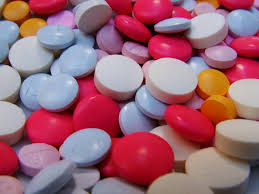Symptom Finder - Dysuria
DYSURIA
Dysuria is difficult or painful micturition. One could cover most of the causes simply by considering the inflammatory lesions of the genitourinary tract in ascending order. Thus, there may be urethritis or urethral carbuncle, trigonitis or prostatitis, cystitis, or pyelonephritis with associated cystitis. This would not, however, cover the disorders that frequently cause associated inflammation of the urinary tract or are associated with difficulty in voiding. To recall these, it is necessary to apply the mnemonic MINT.
M—Malformations would bring to mind meatal stricture, bladder neck obstruction by prostatic hypertrophy, median bar, and urethral strictures. Bladder and ureteral calculi should also be considered here.
I—Inflammatory conditions have already been considered. Intoxication should bring to mind drugs such as NSAIDs and cyclophosphamide, which causes cystitis.
N—Neoplasms of the prostate and bladder may cause difficulty in voiding or painful urination when secondary infection sets in. The N may also stand for neurologic conditions; one must not forget MS, poliomyelitis, diabetic neuropathy, and tumors of the spinal cord in the differential diagnosis of dysuria.
T—Trauma suggests cystitis and trigonitis (honeymoon cystitis) caused by frequent or traumatic intercourse or by introduction of foreign bodies into the bladder, such as catheters.
Approach to the Diagnosis
The approach to the diagnosis includes a urinalysis, urine cultures, smear and culture of any discharge, an IVP, voiding cystogram and cystoscopy, CT scan of abdomen and pelvis, and cystometric examination. In women with “negative” cultures, Chlamydia urethritis must be considered and treated. In men with negative cultures, prostatic examination, massage, and evaluation of discharge are done. DNA probe testing of the urine is useful in detecting gonorrhea or Chlamydia and obviates the need for cultures. Massage of the prostate should be avoided in acute prostatitis. A 4-week trial of ciprofloxacin may help diagnose chronic prostatitis. All patients with persistent dysuria should be given a therapeutic trial of antibiotics even when the urinalysis is negative.
Other Useful Tests
1. Cultures for gonorrhea and Chlamydia
2. Anaerobic cultures
3. Cultures for acid-fast bacilli
4. Urology consult
5. Gynecology consult
6. Four cup test (prostatitis)
7. Cystourethrography (recurrent UTIs in children)
Dysuria is difficult or painful micturition. One could cover most of the causes simply by considering the inflammatory lesions of the genitourinary tract in ascending order. Thus, there may be urethritis or urethral carbuncle, trigonitis or prostatitis, cystitis, or pyelonephritis with associated cystitis. This would not, however, cover the disorders that frequently cause associated inflammation of the urinary tract or are associated with difficulty in voiding. To recall these, it is necessary to apply the mnemonic MINT.
M—Malformations would bring to mind meatal stricture, bladder neck obstruction by prostatic hypertrophy, median bar, and urethral strictures. Bladder and ureteral calculi should also be considered here.
I—Inflammatory conditions have already been considered. Intoxication should bring to mind drugs such as NSAIDs and cyclophosphamide, which causes cystitis.
N—Neoplasms of the prostate and bladder may cause difficulty in voiding or painful urination when secondary infection sets in. The N may also stand for neurologic conditions; one must not forget MS, poliomyelitis, diabetic neuropathy, and tumors of the spinal cord in the differential diagnosis of dysuria.
T—Trauma suggests cystitis and trigonitis (honeymoon cystitis) caused by frequent or traumatic intercourse or by introduction of foreign bodies into the bladder, such as catheters.
Approach to the Diagnosis
The approach to the diagnosis includes a urinalysis, urine cultures, smear and culture of any discharge, an IVP, voiding cystogram and cystoscopy, CT scan of abdomen and pelvis, and cystometric examination. In women with “negative” cultures, Chlamydia urethritis must be considered and treated. In men with negative cultures, prostatic examination, massage, and evaluation of discharge are done. DNA probe testing of the urine is useful in detecting gonorrhea or Chlamydia and obviates the need for cultures. Massage of the prostate should be avoided in acute prostatitis. A 4-week trial of ciprofloxacin may help diagnose chronic prostatitis. All patients with persistent dysuria should be given a therapeutic trial of antibiotics even when the urinalysis is negative.
Other Useful Tests
1. Cultures for gonorrhea and Chlamydia
2. Anaerobic cultures
3. Cultures for acid-fast bacilli
4. Urology consult
5. Gynecology consult
6. Four cup test (prostatitis)
7. Cystourethrography (recurrent UTIs in children)

